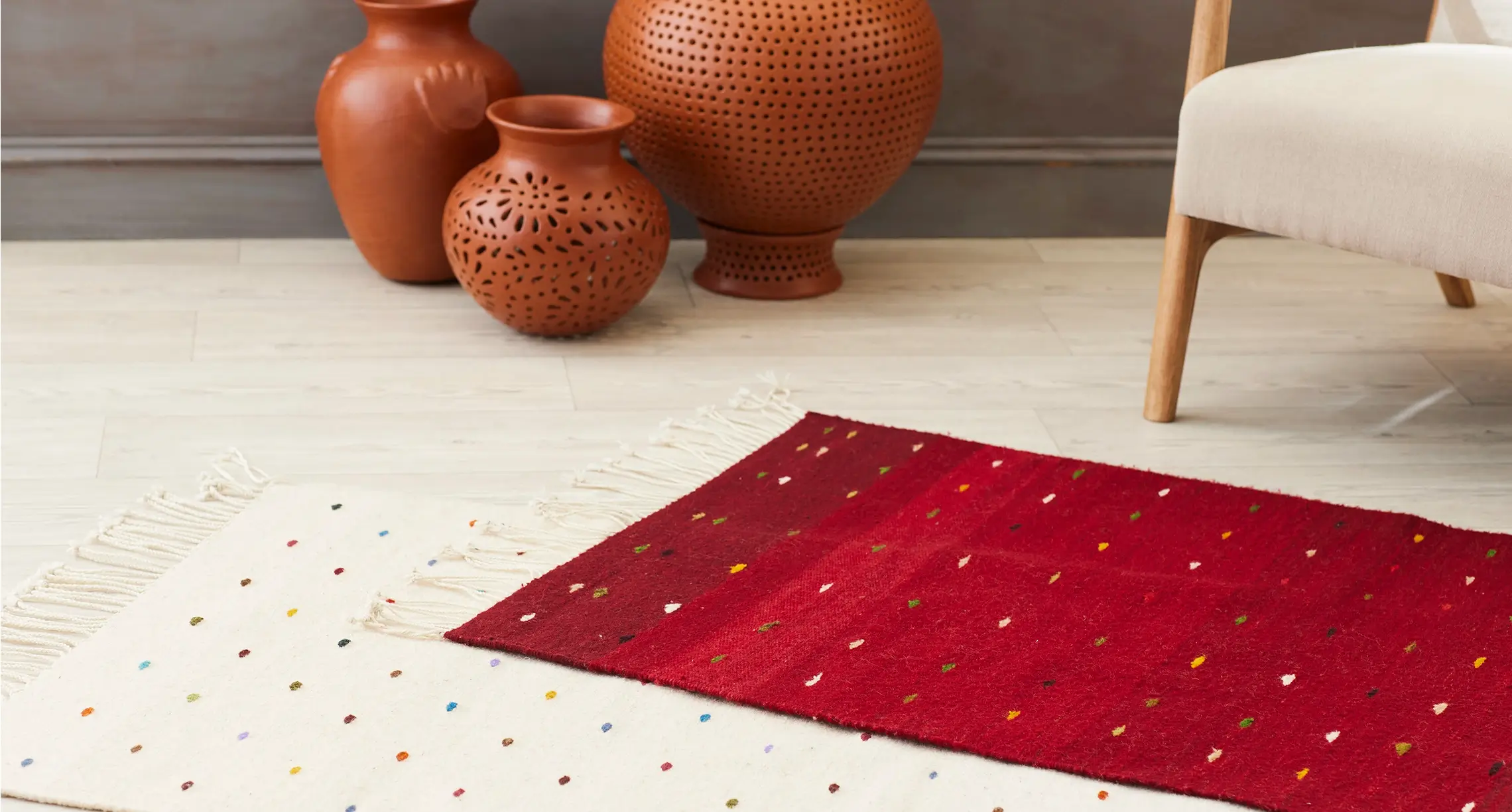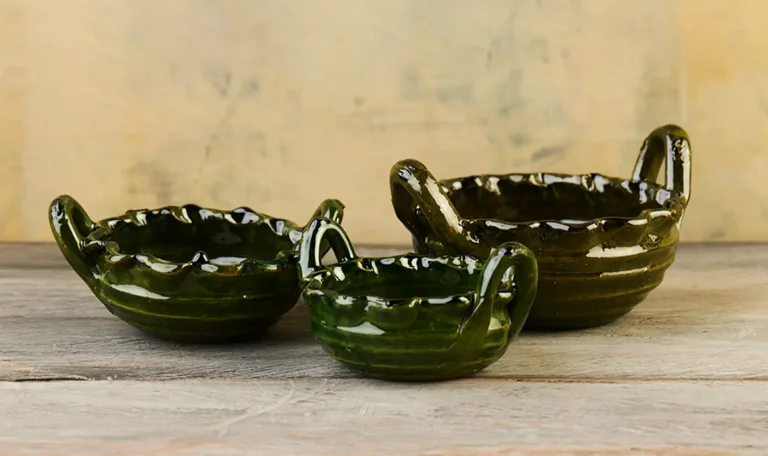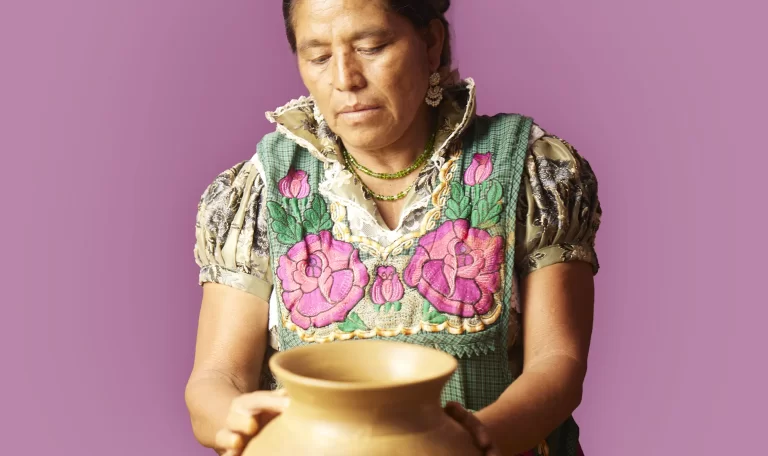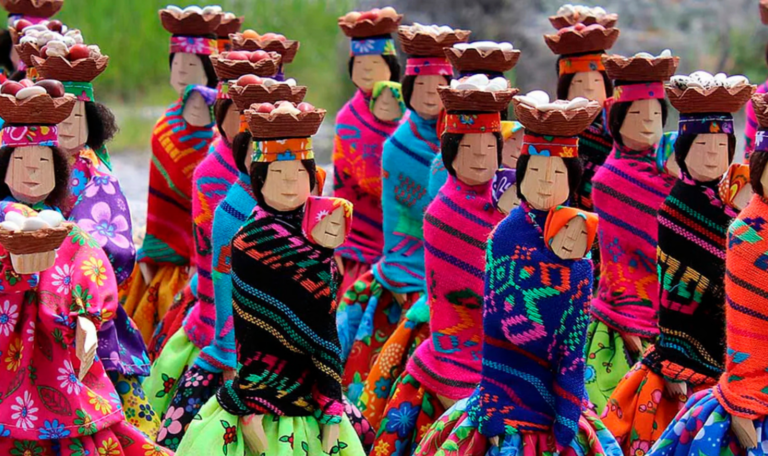Nestled in the heart of Oaxaca, Teotitlán del Valle is a town where the Zapotec tradition of weaving thrives, producing rugs that are as famous as they are beautiful. These handcrafted products combine centuries of history with the skill and creativity of local artisans, creating unique pieces that tell stories through their intricate designs and natural colors.
Pre-Columbian Roots
The origins of textile art in Mexico date back to pre-Hispanic times, when women wove on backstrap looms, an ancestral technique that is still alive in some indigenous communities. However, in Teotitlán del Valle, the evolution of this tradition is reflected in the use of the pedal loom, introduced by the friars.
The Art of Wool Loom Rugs
The process of creating a Teotitlán rug begins with obtaining sheep’s wool, which is washed, carded and spun into strong yarns. Artisans dye this wool using natural pigments—cochineal for rich reds, indigo for deep blues, and marigold for vibrant yellows. This environmentally friendly approach not only ensures the quality of the colors, but also preserves the artisans’ connection to the land and its resources.
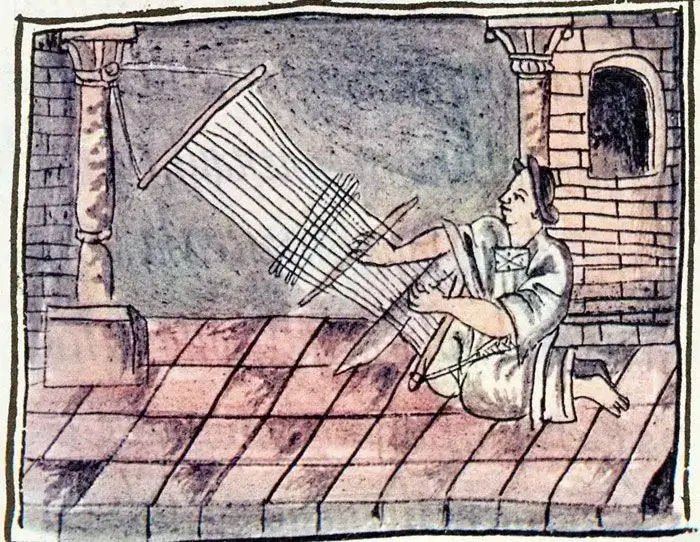
Ancestral Designs
The rugs of Teotitlán del Valle are more than just decorative objects; they are woven narratives that reflect the rich Zapotec cultural heritage. Traditional designs feature geometric patterns and motifs that symbolize natural elements and ancient deities. In addition, artisans often incorporate contemporary motifs, inspired by famous works of art, creating a fusion of past and present that attracts collectors from around the world.
A Cultural Experience
To visit Teotitlán del Valle is to immerse oneself in a world where time seems to stand still. Family-run workshops welcome visitors, offering a firsthand look at the rug-making process and the use of natural dyes. The town also hosts cultural events that celebrate Zapotec identity, such as Day of the Dead, where rugs and other textiles adorn altars, highlighting their integral role in local traditions.
Teotitlán del Valle rugs are not just crafts; they’re legacies of cultural heritage that have stood the test of time. Owning one means bringing home a piece of art and a slice of history, capturing the essence and spirit of a town whose identity is woven into every thread.
